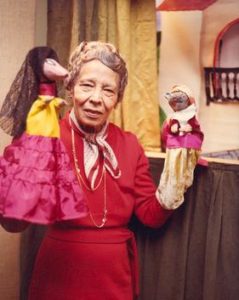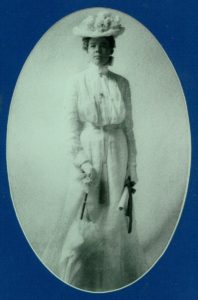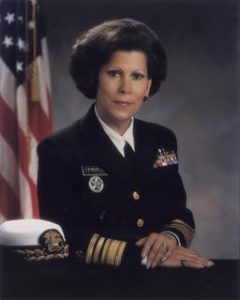A Women’s History Month Homage To Some Overlooked and Forgotten Faces
By Denise Holmes and Julia Florence
Somewhere in the U.S. this Women’s History Month, a little girl will dress up for a school program as Ruth Bader Ginsberg – in a somber black robe paired with Ginsberg’s trademark lace collar – and fervently proclaim that she, too, wants to be a Supreme Court justice one day. Somewhere in the U.S. this Women’s History Month, other little girls will channel their inner Maya Angelou, Susan B. Anthony, Marie Curie, Emily Dickinson, Rosa Parks, or Frances Perkins. Many will focus on trailblazers, yet most do not – and perhaps cannot yet – fully appreciate why we have Women’s History Month at all. They may not know about suffrage. Their mothers and even grandmothers may have earned graduate and professional degrees and had long and distinguished careers, but these little girls likely have not heard of the fight for equal pay, the double day, or a glass ceiling. Their little brothers are likely clueless as well.
Women’s History Month was borne of the struggle for equal access to opportunities in education and employment and can be traced back to the first International Women’s Day in 1911. In 1980, President Carter proclaimed the week of March 8 as Women’s History Week in the U.S.; in 1987, Congress named March as Women’s History Month and this has grown to be a worldwide celebration of women’s accomplishments and achievements. While there are so many women from history to laud this month, let us reflect on and salute some other, perhaps lesser-known figures from the past:

Joan Baez (b. 1941) is a folk singer-songwriter, born in New York of Mexican and Scottish descent. A civil rights and human rights activist, Baez is best known for songs of protest and social justice that characterized her generation. She was the closing act on the first day of Woodstock in 1969, and opened Live Aid in 1985.

Pura Belpré (1899-1982) was a librarian and author who started writing children’s stories after becoming the first Latina hired by the New York Public Library. The Puerto Rico native adapted Puerto Rican children’s stories and created her own, travelling the city and sharing them in both English and Spanish. This showed the community that the library wasn’t just for English speakers. The first tale she ever published was called “Peréz and Martina,” a story about a cockroach and a mouse. The story became the first of a decades-long literary career.

Kalpana Chawla (1961-2003) was the first Indian-born woman to go to space. With a degree in aeronautical engineering in India, she moved to the U.S. for graduate school and became a naturalized citizen on her way to fulfilling a childhood dream of becoming an astronaut. Chawla first orbited Earth as a mission specialist on the space shuttle Columbia in 1977 and operated a robotic arm. When she returned to space on the Columbia in January 2003, she and her crew members conducted more than 70 experiments related to earth science and space. Unfortunately, damage to the space shuttle’s heat shields on liftoff prevented its safe reentry to the earth’s atmosphere and the crew perished.

Eliza “Lyda” Burton Conley (1868-1946), a member of the Wyandotte tribe, was the first Native American and the third woman to ever argue a case before the U.S. Supreme Court. The 1910 case concerned preservation of the Huron Indian Cemetery in downtown Kansas City after Congress had approved sale of the land and removal of the bodies. Although Conley lost the court case, she continued to fight to protect the burial ground for as many as 600 Native Americans, including her mother and sister. Kansas state senator Charles Curtis (also a Native American and future Vice President under President Herbert Hoover) in 1913 wrote and oversaw passage of a law to protect the cemetery. Conley was buried there next to her family in 1946 and, in 2017, the Huron Indian Cemetery was designated a National Historic Landmark.

Dolores Huerta (b. 1930) With Cesar Chavez, she founded the United Farm Workers in 1965. Huerta’s activism efforts lead to improved working conditions and successful union contracts for farm workers. Most notably, she was behind the elimination of harmful pesticides in the grape farming process, and advocated for better health and unemployment benefits for workers. In 2012, President Barack Obama presented Huerta with the Presidential Medal of Freedom.

Maya Lin (b. 1959) is an artist and sculptor who specializes in civic memorials and large-scale installations. While still a student at Yale University in 1981, this daughter of Chinese immigrants won a national competition to design a memorial honoring the Americans who fought in the Vietnam War. Her heritage, her youth, and even the perceived simplicity of what we now know as “the Wall” all generated much controversy at the time.

Patsy Mink (1927-2002) became the first woman of color elected to the U.S. House of Representatives in 1964, serving Hawaii in Congress until 1977 and then again from 1990 until her death in 2002. A third-generation Japanese-American, Mink championed equal rights for women, most notably as one of the main authors of Title IX, which mandated athletic and academic gender equity in federal funding for institutions of higher education.

Antonia Novello (b. 1944) is a Puerto Rican-born physician and public health official. Drawn to medicine in hopes of alleviating suffering, she focused her early career on pediatrics and kidney disease. After joining the Public Health Service in 1979, Novello focused on organ transplants, child health (specifically pediatric AIDS) and also trained in public health. In 1990, President George H.W. Bush named Novello the 14th U.S. Surgeon General; she was the first woman, the first person of color, and the first person of Latin origin to serve in that capacity.

Susan La Flesche Picotte (1865-1915) of the Omaha tribe, was the first Native American woman to become a physician. She earned an M.D. from the Women’s Medical College of Pennsylvania, then returned home to treat all patients seeking care, regardless of race, and to introduce and champion health and hygiene practices. In 1913, Picotte opened the first hospital to be built on a reservation; the Nebraska center was later renamed for her and in 1993 was designated a National Historic Landmark.

Mary Golda Ross (1908-2008) was the first Native American aerospace engineer. A Cherokee from Oklahoma, Ross received a master’s degree in mathematics and later moved to California and became the first woman engineer at Lockheed. Ross was an author of a NASA publication about space travel to Mars and Venus; NASA later claimed her as a “hidden figure” following the release of the movie of that name.

Maria Tallchief (1925-2013) was America’s first prima ballerina. An Osage born in Oklahoma, Tallchief moved to New York to perfect her craft. In 1946, she joined George Ballanchine and became the star of what would become the New York City Ballet. Having toured around the world, Tallchief is perhaps best known for her role as the Sugar Plum Fairy in the Nutcracker. After she retired, Tallchief and her sister founded and ran the Chicago City Ballet. In 1996, Tallchief was recognized with a lifetime achievement award, a Kennedy Center Honor.

Hisaye Yamamoto (1921-2011) was born in California to Issei (a Japanese term for Japanese-born first generation immigrants in the U.S.) parents and became an author best known for her depiction of the trials and challenges of Japanese- Americans. Sent at age 20 to an internment camp in Arizona with her family, Yamamoto drew upon that three-year experience in much of her critically acclaimed work.
Maybe next year, more little girls will select one of these twelve awe-inspiring women as someone to emulate. For more about some of these and other forgotten and overlooked women heroes, please see these resources:
- 20 Native American Women You Should Know – (powwows.com)
- Mary Ross: A Hidden Figure | NASA
- Twelve Asian American and Pacific Islander Women to Know | Smithsonian American Women’s History Museum
Over the past 20 years, the Jack Kent Cooke Foundation has helped to educate and elevate women. Since its inception, the Foundation has selected 1600 women to be Cooke Scholars, and the Alumni community is made up of about 55% women. Among current Scholars, 58% are women. Later this month, we will share some reflections on Women’s History Month from women in our first cohort of Scholars.